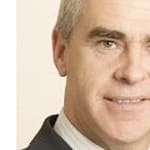The following case study was provided as part of the evidence for the effectiveness of employee engagement strategies in improving performance, productivity and, in the private sector profitability. It has been used cumulatively with other submissions compiled by many leading companies and organisations to leave little room for doubt about the statistical importance of engaging employees.
This particular case study is an additional support to The Evidence Paper
Background:
Belron is the world’s largest dedicated vehicle glass repair and replacement service. It was founded in the late 1800s as the Plate Glass Company and evolved into Belron in the 1990s. They operate in 33 countries and have 24,000 employees (FTEs). Its turnover doubled between 2005 and 2010.
Results:
Belron ranked 36 regional managers across four countries, using Profit versus Budget as the key performance indicator. Those regional managers creating high performance and energising climates were 4.2 times more likely to deliver above average profit.
In 2000 Belron started transforming its approach to Leadership development and in 2004 added two additional feedback tools: an inventory of leadership and an organisational climate survey. By 2007 over 500 leaders were receiving climate feedback as part of their development. Hay Group reviewed 92 executives who had received the feedback on three occasions between 2003 and 2008. It showed that by their third climate assessment, the Belron leaders were almost twice as likely to create high performing teams than the benchmark.
A General Manager for one of the most important business units in Belron, received data that showed he was relying heavily on two leadership styles creating a demotivating climate for his team. The GM set a two year plan, working with his line manager (the CEO) and an internal Belron coach, to change his behaviour in a way that would drive a positive climate. Two years after his initial feedback he took his leadership style and climate survey again. This time it showed a significant swing in his leadership style which resulted in high performance.
From 2002 to 2005 sales increased from €36.4 million to €55.4 million, with €1.7 million profit added to the bottom line. The CEO’s view was very clear – without the focus on this GM’s leadership this level of growth would simply have been unachievable.




